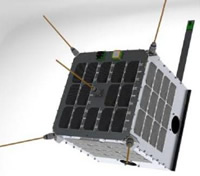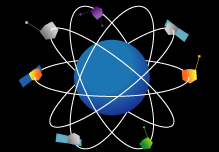• Mar 16, 2011
 Feedback from the reviewers Feedback from the reviewers
• Mar 14, 2011
Congratulations to the winners!
The contest results and abstracts are available.
• Feb 23, 2011
 Final paper template Final paper template
• Feb 15, 2011
New regional coordinators are announced.
• Jan 20, 2011
The finalists are announced!
• Jan 11, 2011
The regional seminar report from Spain.  Report Report

• Dec 22, 2010
The regional seminar report from Brazil.  Report Report
• Dec 20, 2010
Submission closed. We have received 62 applications.
Finalists will be announced on January 20, 2011.
• Dec 14, 2010
FAQ about online submission
• Dec 6, 2010
The regional seminar in Kenya was held on Oct 27.  Report Report

• Dec 4, 2010
The second regional seminar in Venezuela was held on Nov 18.  Report Report

• Nov 29, 2010
Regional Seminar was held in South Africa on Oct 28.  Report Report

• Nov 28, 2010
Regional Seminar was held in Turkey on Nov 26.  Report Report

• Nov 26, 2010
Regional seminar was held in Egypt.  Report 1 Report 1  Report 2 Report 2  Report 3 Report 3

• Sep 10, 2010
Two people per finalist team will be invited to Japan. [FAQ updated]
• June 11, 2010
The presentation slides at the 1st Nano Satellite Symposium are available

|
|
 |
Review Team | Regional Coordinators
1st Prize: Yuki Sato et al. (Mitsubishi Electric Corporation Advanced Technology R&D Center)
Integrated Meteorological / Precise Positioning Mission Utilizing Nano-Satellite Constellation
2nd Prize: Mary Knapp et al. (Massachusetts Institute of Technology)
ExoplanetSat Constellation
3rd Prize: Richard Long et al. (Surrey Satellite Technology Limited)
Distributed Multispectral Imaging System
 Feedback from the reviewers Feedback from the reviewers
List of the finalists and their abstracts
AXELSPACE, Nano-Satellite Center, and University of Tokyo First Program proudly announce the great opportunity for aerospace engineers, college students, consultants, and anybody interested in innovative space development from all over the world to participate in this unprecedented mission design competition.
Encourage innovative exploitation of nano-satellites in constellations to provide useful and sustainable capabilities, services or data.
Reasons for participation
- Finalists will be invited to present in Japan at the 2nd Nano-satellite symposium
 Final paper template Final paper template- Awards: 1st prize, 500,000 JPY; 2nd prize, 300,000 JPY; 3rd prize, 200,000 JPY
- Best papers published in a peer-reviewed journal: e.g., Acta Astronautica or Journal of the British Interplanetary Society (TBR)
- High visibility for your ideas and the potential for future collaboration and support
 
|
What is a nano-satellite? |
 |
Low cost, short-development-time satellite of less than 50 kg* with a reasonable reliability. Examples are:

WNISAT
(AXELSPACE) |
WNISAT (left), 10 kg, will monitor the ice in the Arctic Ocean. |

PRISM
(Univ. of Tokyo) |
| PRISM (right), 8 kg, is equipped with a dioptric system including an extension boom. The camera resolution on the Earth's surface is 30 m. |
* Less than 15 kg for this contest
|
|
 |

|
| What is a constellation? |
 |
 |
A formation of multiple satellites in Earth orbit for a single mission.
A constellation will provide satellite users with various advantages such as a higher time resolution, overall system robustness, wider coverage, etc.
|
|
 |

|
This contest is funded by "Funding Program for World-Leading Innovative R&D on Science and Technology."
|









